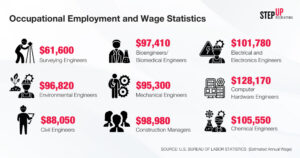Onboarding Best Practices
Recently, LinkedIn surveyed 14,000 professionals about their onboarding experiences, asking what actions were the most helpful and the most meaningful to them. Since onboarding experience can affect a new employee’s longevity and productivity, it’s important to get this process right. The top four practices for effective onboarding were universally chosen by respondents, regardless of age, gender, and nationality.
These practices are shown with the percentage of respondents finding them to be very useful and a short explanation of what new hires are looking for and why.
Onboarding Best Practices:
- One-on-one time with direct manager. (72%) The top choice for every demographic was time spent with direct managers. This time to meet, discuss, and ask questions of your direct manager is crucial to building a good working relationship, company loyalty, and to ensure a sound understanding of both the job and the company.
- Outline of performance goals. (67%) Having a thorough understanding of what the job responsibilities, goals, and expectations are is crucial to performance. Exactly why this is a standard onboarding objective and nearly every company already includes it.
- Introduction to company culture and values. (54%) Companies are finding culture to be an effective a selling point for job candidates, but it’s important to new hires to see that the emphasis on culture isn’t just a sales tactic. To be effective at increasing employee longevity and productivity, that attention to corporate culture and values needs to extend into both the onboarding period and the work day. There was little preference between receiving the information in an employee handbook or through a discussion with a manager or HR. New hires just feel more comfortable understanding the language and customs of the place in which they hope to spend years of their careers.
- Plan for first month on the job. (53%) This goes along with an outline of performance goals. Employees are eager to understand what their training will look like, what they are expected to accomplish and on what timeline, and also get an idea of the daily, weekly, and monthly schedule for their new position. Change is difficult, even positive change, and understanding the plan and being able to anticipate what’s next is reassuring and helps even C-level employees settle in faster and more comfortably.
There were other options presented for respondents to vote on, such as a list of people to meet, time with the leadership team, job training guides, job shadowing, and a welcome gift, but none rated as highly as these four. The next highest rated was a chance to meet important colleagues and teammates. The least important was a welcome gift.
While many companies choose to include ALL of these objectives in their onboarding process and more, it offers insight into the needs of new hires to know what their top priorities are. The available data is encouraging! It shows that new employees are concerned about getting to know their boss, understand company and job expectations, they want to do their job well and earn high approval ratings, and they want to understand what to expect the first few weeks on the job.
Want to know more about onboarding best practices, or how Step Up Recruiting can support and enhance your onboarding program? Contact us today!



